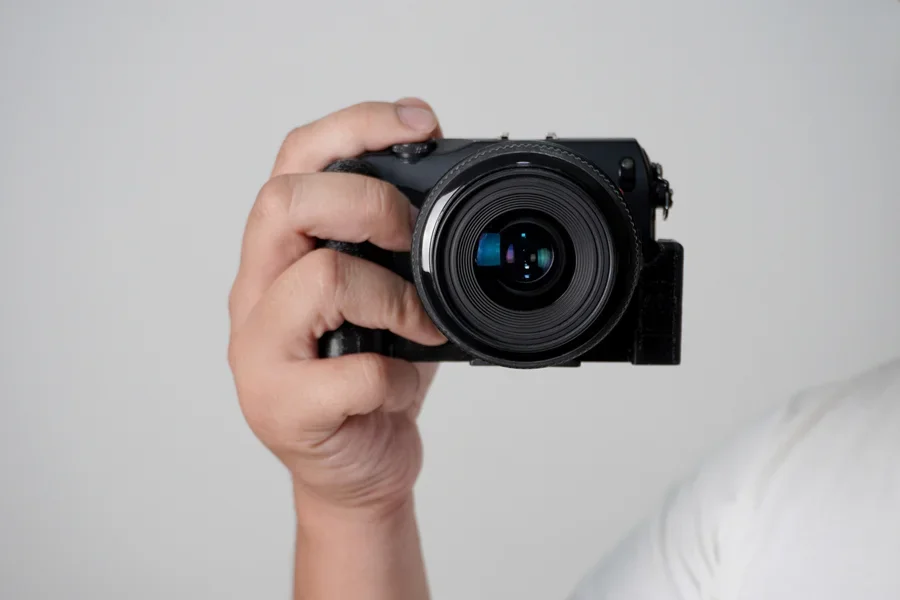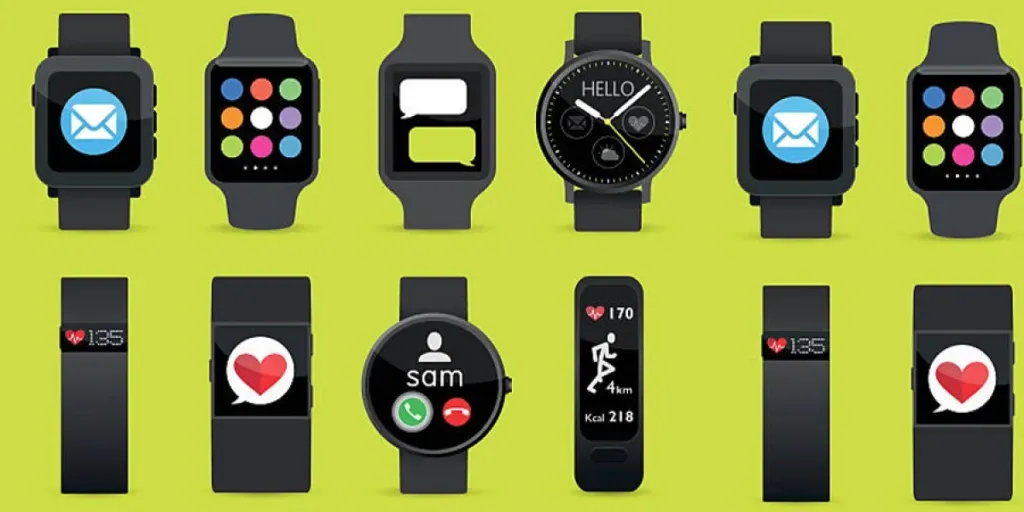As smartphone cameras gain higher resolution and other advanced features like zoom capabilities, stabilization and AI integration, the digital camera industry is impacted. While we are seeing a significant shift in the digital camera market, we are still seeking innovation and progress.
Japanese brands like Canon and Sony tend to lead the market, Chinese manufacturers are making major moves and Chinese camera brands are on the rise.
Here, we explore 5 Chinese camera brands shaping the industry in 2025.
Table of Contents
Overview of digital camera market in China
Who is still purchasing digital cameras?
What are DSLR and mirrorless cameras?
5 Chinese camera brands making waves
1. DJI
2. Insta360
3. YI Technology
4. Z Cam
5. KanDao Technology
Instant camera brands in China
The future of Chinese camera brands
Final thoughts
Overview of digital camera market in China

In 2023, the global Digital Camera Market was valued at USD 8.04 billion and is projected to reach USD 24.4 billion in 2025. Asia Pacific continues to lead the market and in 2025 the highest revenue is expected to be generated in China with an approximate value of USD 6.3 billion. This is a result of its huge consumer base, high pace of technological innovation, and availability of leading camera companies in nations such as Japan and China.
Where are we seeing the most growth? Mirrorless cameras with interchangeable lenses. Since 2020, shipments of cameras with interchangeable lenses have risen by 11.7%. However, the value of shipments has risen by 77.5%, which is remarkable. Shipments for mirrorless cameras continued to rise in 2024 with Gen Z leading the way. The mirrorless camera market is fueled by 3.6 million photographers worldwide, according to Market.US and the global market size for mirrorless cameras is estimated to reach USD 7.8 billion by 2033.
We are also seeing an increased interest in vintage cameras driven by a sense of nostalgia among camera lovers. Aligned with the same nostalgia and a fun experience, instant cameras are also experiencing a resurgence, especially among Gen Z consumers.
Who is still purchasing digital cameras?

While smartphones have replaced digital cameras for many previous users, there are still several groups dedicated to digital cameras. These include:
- Professional photographers: DSLR and mirrorless cameras remain essential tools for photography professionals as they need higher image quality, manual controls, and interchangeable lenses. This is particularly true for professionals in fields like fashion, sports, wildlife, journalism and wedding photography.
- Content creators: With the rise of social platforms that prioritize video content, more creators are investing in their cameras and equipment. Many creators are investing in compact mirrorless cameras, action cameras, and 360-degree cameras to improve video quality. Those investing in quality digital cameras aim to stand out from smartphone-only creators.
- Adventure and outdoor enthusiasts: Action cameras are popular with hikers, divers, skiers, and travelers who want to capture high-quality images in more extreme conditions. They are often seeking action shots and are looking for good build quality that include rugged, waterproof devices that can capture extreme conditions.
- Hobbyists and enthusiasts: Photography hobbyists still prefer dedicated cameras for the tactile experience and creative control.
What are DSLR and mirrorless cameras?

Understanding the two main types of professional digital cameras helps explain why many users still invest in them.
DSLR cameras (Digital Single-Lens Reflex)
DSLRs use a mirror system to reflect light from the lens up into an optical viewfinder. This lets photographers see exactly what the lens sees in real-time.
- Key features:
- Fast autofocus (especially good for sports and wildlife photography)
- Optical viewfinder for clear, real-world previews
- Larger body size, often with very strong battery life
- Wide selection of interchangeable lenses
- Popular for: Professional photography, journalism, and outdoor shoots.
Mirrorless cameras
Mirrorless cameras eliminate the mirror system. Instead, they send the image directly to an electronic viewfinder or LCD screen.
- Key features:
- Smaller, lighter, and more portable
- Faster shooting speeds (ideal for video and continuous shooting)
- Excellent video quality with advanced autofocus
- Growing range of high-quality lenses
- Popular for: Vlogging, travel photography, street photography, and professional videography.
In recent years, mirrorless cameras have become more popular in many markets because of their portability and video performance. However, DSLRs are still widely used in professional fields where durability and battery life are critical.
5 Chinese camera brands making waves

Chinese camera brands are quickly gaining ground. In categories like action cameras, 360° cameras, VR technology, and even handheld mirrorless systems, these Chinese companies are innovating fast and often at a fraction of the cost.
Here’s a look at some of the leading Chinese camera brands shaping the future of photography and videography.
1. DJI
DJI is best known for its drones, with more than 70% market share in consumer and commercial drones. But DJI is becoming a serious player in handheld and action cameras with products like the DJI Osmo Pocket and Osmo Action series. These handheld cameras and stabilizers that rival GoPros and even entry-level mirrorless cameras
- Specialty: Camera drones, handheld gimbals, action cameras
- Popular Products: DJI Osmo Pocket, Osmo Action series
- Main Markets: North America, Europe, Asia-Pacific
Who Buys DJI
- Content creators
- Travel influencers
- Real estate professionals
- Commercial drone operators
2. Insta360
Insta360 is a leader in 360-degree imaging, action cameras, and compact mirrorless-style cameras for vloggers, maintaining a 67.2% global market share for six years. Known for creative features, compact designs, and direct competition with GoPro, Insta360 has become a favorite for tech-savvy creators and adventure seekers.
- Popular Products: Insta360 X3, GO 3, ONE RS
- Top Markets: United States, Germany, Japan
Key Users
- Adventure travelers
- Sports creators
- Tech-savvy social media users
- Virtual tour producers
3. YI Technology
YI Technology, often called “Xiaomi’s camera arm” in its early days, produces a wide range of affordable cameras, including action cameras, home security cameras, and dash cams. YI is known for offering quality video capabilities at budget-friendly prices.
- Specialty: Action cameras, dash cams, security cams, mirrorless cameras
- Key Products: YI 4K Action Camera, YI M1 Mirrorless
- Top Markets: Growing in Europe, Southeast Asia, and North America via Amazon
Known for affordable alternatives to GoPro and other action brands and its 4k recording capabilities.
4. Z Cam
Z CAM specializes in professional cinema and VR cameras and is recognized for providing high-end video production capabilities at a more accessible price point. Its cameras are widely used in indie filmmaking, VR content creation, and commercial video production.
- Specialty: Professional cinema cameras, VR cameras
- Popular Products: Z CAM E2 Series
- Main Markets: North America, Europe, Asia-Pacific
Key users
- Independent filmmakers
- VR content creators
- Professional videographers
- Small production studios
5. KanDao Technology
KanDao Technology focuses on professional 360-degree imaging and enterprise-level conferencing solutions. Their cameras are highly regarded in VR film production and business communication sectors, combining cutting-edge optics with AI-driven features.
- Specialty: 360° VR cameras, enterprise conferencing devices
- Popular products: KanDao Obsidian, KanDao Meeting series
- Main markets: North America, Europe, Asia-Pacific
Who buys KanDao
- VR filmmakers
- Event organizers
- Remote conferencing teams
- Tech-forward businesses
Instant camera brands in China

While not traditional digital camera makers, brands like Paperang and PeriPage are famous for compact, portable instant-print printers. These are popular among younger consumers for creating instant photos easily from smartphone pictures.
While China dominates the manufacturing of instant printers and accessories, there are currently very few Chinese brands producing true instant cameras similar to Fujifilm’s Instax or Polaroid models.
For now, if you’re looking for true instant cameras made by a Chinese brand, options are limited. However, we may see more native Chinese instant camera brands emerge as the demand for nostalgic photography continues to grow.
The future of Chinese camera brands
- AI & automation: Real-time object tracking, facial recognition, and smart editing tools are standard in upcoming models.
- AR & VR content: 360° cameras will grow with the rise of virtual reality and immersive content.
- Modular design: New models will offer customizable lenses, mounts, and accessories, appealing to creators of all types.
Final thoughts
Whether you’re a content creator, adventurer, or filmmaker, these companies are offering competitive performance, smart features, and accessible pricing. Keep an eye on them because the future of photography may very well be made in China.




